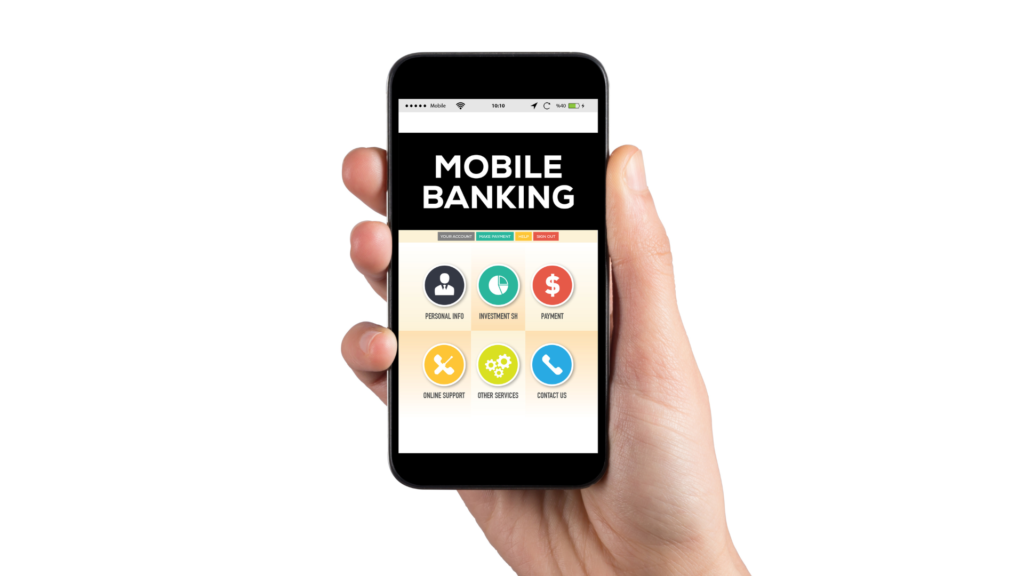Did you know that at Finanteq, we made the first banking applications even before the iPhone and Android era? It was a time when there was yet to be anyone who believed in apps. Mobile browsers were still commonly considered the future of banking.
We were the first in the world to write and exhibit multiplatform mobile banking at Mobile World Congress in Barcelona in 2007. It was a few months before the launch of the iPhone and a year and a half before Android 1.0! Even then, Finanteq had mobile banking as an application for such platforms as Nokia Series 60, Windows Mobile, Blackberry, J2ME.
But what was the beginning of mobile banking, and how it developed over time? Let’s dive into mobile banking history!
Internet and mobile banking introduction
The days customers used to go to banks to check their bank account balance or pay a bill are gone forever. Time is money – they no longer want to waste time standing in queues. Of course, there are situations where a visit to the bank is necessary for specific purposes. But nowadays, customers do most of their banking remotely in the comfort of their place.
What is mobile banking?
In a nutshell, mobile banking (m-banking) allows remote 24-hour access to finance on a mobile device, such as a smartphone or tablet, without visiting a brick-and-mortar branch. Its predecessor is internet banking (also known as online or web banking) – a broad package of services that lets people manage their money via the internet (bank’s website).
How does mobile banking work?
Mobile banking differs from online banking because transactions are carried out via the banking application provided by a financial institution. All we need is a smartphone with an internet connection. The customer downloads the app to the phone, logs in, and that’s it.
Mobile banking potential
With rising customer expectations and increasing digitalization, customers nowadays can carry out most financial dispositions on the mobile banking apps installed on their smartphones because it is easy to access. Starting with checking the balance, viewing account history, transferring money, making investments, taking out a loan, or even paying for parking.
The prominence and potential of mobile banking best illustrate the recent reports stating that 80% of banking customers globally use mobile banking technology daily.
History of internet banking
How did the early days of “computerized” banking look? What were the first internet banks?
Over the last four decades, online banking has been evolving just after the birth of the internet. In this section, we trace its history.
1980 – With its TRS-80 computer and secure modem, United American Bank was already offering its customers a home banking service. Following the trend, more banks in the United States began testing whether this banking method would appeal to customers.
1981 – Remote banking services started in New York. Four more key banks enabled their customers to access home banking: Citibank, Chase Manhattan, Chemical Bank, and Manufacturers Hanover.
1983 – The Bank of Scotland, with its “Homelink” service, offered internet banking first in the UK. Sending transfers and paying bills was possible thanks to the internet connection via TVs and phones.
1994 – Stanford Federal Credit Union became the first financial institution to provide online banking to all its customers in the US.
1995 – Presidential Bank was the first bank in the USA which enabled customers to access their accounts online.
1997 – The Royal Bank of Scotland became the first UK bank to launch a complete internet banking service via text.
Even then, banks saw the potential to develop this type of service. Some of them started to increasingly encourage customers to use internet banking by offering more attractive deals than for customers using traditional banking. Online banking was gaining popularity. By 2006, 80% of all US banks were providing internet banking services.
Mobile banking history
People have become so accustomed to doing things on the phone that today they cannot imagine life without it. While it seems that mobile banking is a relatively new technology, the first attempts at banking on a mobile phone took place in the last century, basically a step behind the rise of internet banking. The history of mobile banking has its roots in the late 1990s and early 2000s and is strictly related to the internet’s boom.
SMS banking
By the time the internet emerged and before the introduction of mobile web services (1999), mobile banking was referred to as SMS banking because it was mainly handled via SMS or text messages. The use of mobile phones was increasing, and banks decided to take advantage of this to communicate with customers. However, banks offered very few services (for example, an SMS request about account balance).
WAP banking services
Indeed, banks began offering the first m-banking platforms to their customers in 1999, when the wireless application protocol (WAP) was introduced. More and more people had access to the internet on their mobile phones, and the banks could not miss such an opportunity to bring customers closer to their financial affairs. The first WAP banking appeared in Norway in 1999.
Before 2010, m-banking services were offered via SMS and WAP. While WAP banking has become a thing of the past, SMS notifications have stood the test of time and are still very popular. Today, banks still provide customers with various important information via SMS. What is more, codes sent by SMS still are one of the methods of transaction authorization.
Android and iOS software breakthrough
There were two main factors that, after 2010, changed the face of m-banking forever: the development of Android (by Google) and iOS (by Apple) operating systems for smartphones, as well as the advent of web-based technologies (WBT) like CSS3, HTML 5, and JavaScript. Thanks to WBT, launching web-based and mobile-based applications on Android and Apple devices was possible.
It also gave birth to mobile banking apps, and mobile banking applications began to evolve.
Smartphone banking
Although the first smartphones went on sale as early as 1993, it was still long before the first banking applications, in today’s meaning of the word, appeared. Blackberry e-mail devices entered the market in 2002, and iPhones appeared in 2007.
Smartphones quickly gained popularity because of Apple, more people switched to mobile. Customers used them not only for communication but also for business, everyday errands, and even entertainment. Smartphones have defined new trends – many companies have started to look at the future in a completely different way. It was inevitable that the banking sector would also exploit such an opportunity.
The world’s first mobile banking application
The Bank of Scotland is unquestionably a global mobile banking pioneer. In 2007 it announced the world’s first mobile banking app for smartphones. It should also be noted that mobile phone top-ups were available at their ATMs as early as 2004.
Moreover, as early as 2009, it provided its customers with free, the first mobile application for the iPhone, and quick statements by text (SMS) on demand. New features were offered in the iPhone app. Customers could check their current balance and recent transactions in real-time. Feedback was necessary at that stage. Customers’ opinions shaped the app’s development and led to new features introduction.
In 2011, the Scottish bank launched the free world’s first fully functional banking app, which was available for iPhones, Android and Blackberry. People were delighted. More than one million users were attracted to the service for the first six months, and they transferred more than £1 billion through the app.
Polish mobile banking – Finanteq’s role
Polish mobile banking pioneer Raiffeisen provided its customers with the first mobile application in 2004 (R-Mobile – Java 2 MicroEdition). As mobile devices were gaining popularity, it was an excellent opportunity for many institutions to offer services on modern phones. At that time, Nokia delivered a suite of new devices with the Symbian operating system, the first smartphones that gave customers access to much more features.
At the time, we were already a company focused on new mobile technologies. With excellent technical competence, we were looking for new places to grow.
An opportunity appeared, and in 2008 Finanteq implemented its first native smartphone application (SYMBIAN) in Raiffeisen. In the following months, applications for devices with other operating systems, such as iOS, Windows Mobile, Android and BlackBerry emerged. 
Evolution of mobile banking
Over the years, a lot has changed in the banking industry and apps. No country in the world today does not have a banking application. Moreover, there are many mobile banking apps from which customers can choose freely. They have different functionalities and different looks.
What does affect the rapid development of mobile banking?
Let me indicate the main factors: the massive popularity of smartphones and applications, the advancement in technology, progressive digitization, growing mobile money infrastructure, changes in customer needs and preferences, increased market and accessibility, and – finally, the extreme competition among banks.
Today almost every bank has its mobile app available on various operating systems. Customers can do their financial tasks on their smartphones on the go. Mobile banking app enables access to many banking services, including account information, digital payments, investments, support services (e.g. requests for a loan or making a complaint), customer service (e.g. example, text, audio, or video chat), purchases, or lifestyle services even, and many more.
Boosted application functions with easy accessibility have acted as a customer lure. You can read more about mobile banking app features in my previous article: What are users demanding from mobile apps – banking app features.
Going back to the following milestones in banking development, in 2008, Bitcoin was invented, and in 2011 Google Wallet was released. In 2014 Apple Pay was created, followed by Samsung Pay in 2015. Many different improved payment platforms, virtual cards, etc., have evolved. Contactless payments, mobile payments, and quick mobile payments have appeared.
Banking apps for smartwatches have also emerged – The Commonwealth Bank of Australia was the first in the world to introduce it in 2015.
The face of the application is changing. As part of the financial system, in search of new income sources and developing applications further, more and more banks create partnerships with various providers (non- and financial), including fintech companies.
Mobile banking app future
Value Added Services (VAS) in mobile banking apps
At Finanteq many years ago, we spotted mobile banking as an m-commerce service. With the growing potential of the mobile commerce and mobile payments market, more and more banks and fintech are incorporating non-financial services their apps. We decided to bridge banking with the world of m-commerce, and it made applications m-commerce platforms – superwallets.
Simultaneously, a new wave of mobile-only banks appeared. The success of mobile banking has caused certain banks to see new opportunities for themselves – they want to operate as “mobile-only” banks. With the example of the fintech company Revolut, we can say that mobile financial apps are becoming a kind of super-apps. They combine the ability to manage your finances in a strict sense and access some other services we have handled so far in several different apps. You can also create your super-app with Finanteq.
Smartwatch banking
With the popularity of mobile devices, wearables are a game-changer in banking. That is why at Finanteq, we build a mobile application for watches. Read more here about the smartwatch trend in mobile banking.
To sum up
Over the years, mobile banking apps have emerged as the new norm worldwide.
The emergence of the internet, mobile phones, and smartphones have brought about significant changes in the banking system worldwide. Customers have become more convenient and more demanding in every area of life. As technology evolved, so did our need for accessibility to our finances.
The smartphone era has certainly contributed the most to the change in habits. The progressive digitization in every walk of life and the COVID-19 pandemic made up the rest. Companies, markets, and systems also had to adapt to the new situation, rising customer expectations, and the latest trends.
In the end, mobile banking triumphed and pushed away traditional online banking, but it was a win-win for both banks and customers. Users are increasingly choosing mobile banking because it is more convenient and accessible. Will mobile replace online banking? I don’t think so.
Just as there are still brick-and-mortar branches, internet banking will survive. There are still some things customers can do only in the branch, and some still prefer face-to-face contact. Many users continue completing transactions on the big screen of the monitor rather than in the mobile app.
That is undoubtedly not the end of technological advancements in the mobile banking applications world.
As far as I am concerned, there is excellent potential for IoT (Internet of Things) banking apps. In my next article, I will talk about the solutions Finanteq offers in this respect. Stay tuned!
And you? What do you think the future will bring?








